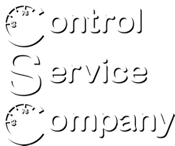Project Description
A considerable number of factors impact the ability of schools to create and sustain optimal learning environments for students. To complicate this challenge, 2020 brought with it the coronavirus pandemic, which is changing operational and safety procedures considerably within classrooms nationwide. For Spring Hill Elementary in Kansas, the decision to invest in tunable white LED lighting systems just before COVID-19 hit couldn’t have been more fortuitous. The school pursued such a project not only to help address disruptive student behaviors and other distractions, but also to optimize its energy usage and management strategy.
INITIATION
Educators within the elementary school had noted specific issues, including testing anxiety, headaches and fatigue, plaguing its students and detracting from their overall learning experience. Pre-installation, students completed a health assessment that provided data supporting noticed behaviors. Teachers would also need assurances that an advanced classroom control system would be user-friendly and enhance efficiencies, while the facility management staff was looking to simplify oversight and control while minimizing ongoing maintenance. In preparation for addressing COVID-19, faculty and staff are now concerned about tracking and tracing, knowing it will require they think differently about finding ways to bring students’ energy levels up and down at various times of day within the same space.
IMPLEMENTATION
After obtaining the Heartland Utilities for Energy Efficiency (HUEE) Community Grant Opportunity to help defray costs, Spring Hill Elementary selected CSC to pilot automated lighting technology in three classrooms. These spaces were fitted with tunable white and dimmable LED luminaires with tasked-based scene control, occupancy sensors and touchscreen panels for ease of operation. The technology offered educators the opportunity to alter light levels and zoning in each room, along with color temperature adjustments, without help from the facilities team. Post-implementation assessment data indicates this generated positive student response, with an increase in students “feeling” better in the mornings and sustaining that feeling all day, while reporting increased energy at the end of the day. Moreover, the facilities management team could operate the system simply and even remotely, resulting in lower maintenance costs. Ultimately, the three classrooms averaged more than 40% energy reduction combined, and more than 85% of students reported an improved learning environment.
Project Details
CLIENT
Spring Hill School District
PROJECT TYPE
Education
“Our facilities team is able to see this on the front end without being in the actual physical space, and operate the lighting from a remote location, which are considerable benefits. We expect energy savings long term to be at least 50% as we optimize our scene settings and minimize unnecessary switching.”
“I would love it to be in every classroom in our building, and I would highly recommend it for our other buildings as well, especially in our special education rooms. I would also love to see teachers trained to really watch their kids for the body language signals that the lighting system allows them to quickly and effectively respond to.”




